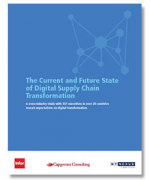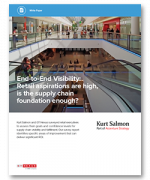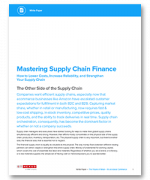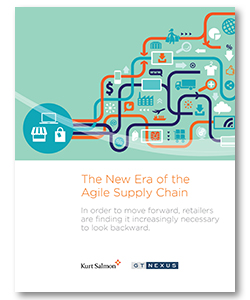The New Era of the Agile Supply Chain
Companies that can react to consumer demand the fastest in the supply chain, seamlessly across channels, can win the loyalty of increasingly fickle and demanding customers.
Having strategic vision in retail typically involves looking ahead and beyond the current state, but when it comes to the retail supply chain, clear vision can be gleaned by looking back—all the way back. Companies that can anticipate and react to consumer desires the quickest along the supply chain—and that do so seamlessly across channels—can win the loyalty of increasingly fickle and demanding customers. However, most retailers examine only the final links in the chain (from their DCs to stores to consumers) and thus they are missing opportunities to gain clarity and agility earlier on.
The ability to address questions such as where inventory is located; how to best use stores for fulfillment; whether transfers between DCs, stores and geographies can be minimized; and how to give customer service associates inventory visibility across regional stores is critical. With that, it is becoming increasingly important for organizations to look along the full length of the chain, not just from DCs, but from finished goods and raw material suppliers. Enabling end-to-end supply chain visibility can provide the missing perspective needed to achieve true agility and a competitive advantage in today’s fast-paced, global retail arena.
End-to-end visibility means different things to different companies. In fact, the definition of visibility is often different even within an organization. It’s no longer just about tracking and tracing shipments. The emerging definition of visibility includes insight into raw material origins, the status of products, orders and shipments, and streamlined access to information about product flow, delays, documents, inventory and costs. This information now feeds into decision making to help mitigate the impacts of demand spikes, supply disruptions and volatility associated with supply chains increasingly under stress from a number of factors, including the need to increase speed to market.
What’s Related




Favorites





